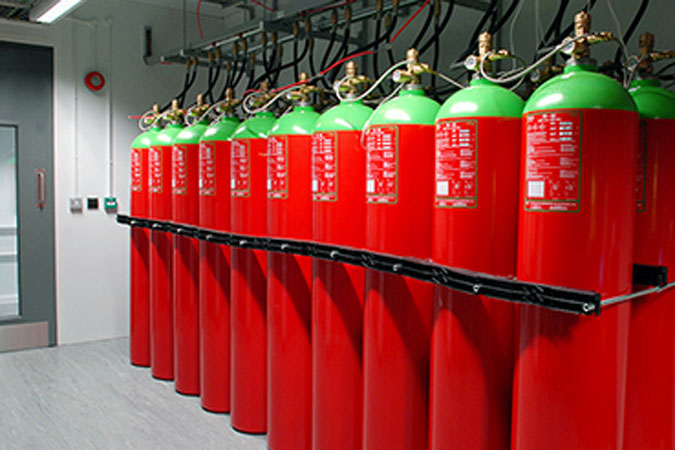Gas Supression System is a term to describe the use of inert gases and chemical agents to extinguish a fire. Also called Clean Agent Fire Suppression. These Agents are governed by the National Fire Protection Association (NFPA) Standard for Clean Agent Fire Extinguishing Systems – NFPA 2001 in the USA, with different standards and regulations in other parts of the world. The system typically consists of the agent, agent storage containers, agent release valves, fire detectors, fire detection system (wiring control panel, actuation signaling), agent delivery piping, and agent dispersion nozzles. Less typically, the agent may be delivered by means of solid propellant gas generators that produce either inert or chemically active gas.
GAS SUPRESSION SYSTEM
Broadly speaking, there are two methods for applying an extinguishing agent: total flooding and local application
Systems working on a total flooding principle apply an extinguishing agent to a three dimensional enclosed space in order to achieve a concentration of the agent (volume percent of the agent in air) adequate to extinguish the fire. These types of systems may be operated automatically by detection and related controls or manually by the operation of a system actuator.
Systems working on a local application principle apply an extinguishing agent directly onto a fire (usually a two dimensional area), or into the three dimensional region immediately surrounding the substance or object on fire. The main difference in local application from total flooding design is the absence of physical barriers enclosing the fire space.
In the context of automatic extinguishing systems, local application generally refers to the use of systems that have been emplaced some time prior to their usage rather than the use of manually operated wheeled or portable fire extinguishers, although the nature of the agent delivery is similar and many automatic systems may also be activated manually. The lines are blurred somewhat with portable automatic extinguishing systems, although these are not common.

